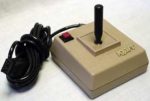Get ready for another picture-intensive post that documents my family’s visit to the Computer History Museum in Mountain View, California! The Computer History Museum is divided into 20 numbered rooms, which advance their way through the history of computers chronologically, and starts with a pretty old computer — the Abacus.

From a historical perspective this makes perfect sense, but it doesn’t do a good job in convincing a couple of kids that this museum is not going to be boooooring.
At least the first 10 rooms of the museum cover computers that were made before I was born. There were large sections of ENIAC…

…along with a large UNIVAC…

…and several other old computers. One room covered the development of transistors and another showed old analog machines designed to track trajectories. Again, all these things were historically interesting but did little to keep the kids’ attention.

One of the things that I found really interesting was this Enigma codebreaking computer from World War II. There was a short video playing next to the machine and the kids did think that was cool.

Another historical computer on display at the museum was this Cray 1. When I was a kid all I knew about Cray computers was that they were used in creating the graphics in The Last Starfighter. It’s cut off in the picture, but this Cray contained 32k of RAM and cost between $6 and $10 million dollars.

If you are a lady and think this museum sounds boring, then check out this computer from 1969!

This computer was designed to appeal to women and was designed to store recipes and live in your kitchen! For $10,000, owners would get the computer, an apron, a cook book, and a two-week course on how to program the thing. All the recipes were stored and presented in binary, which might explain why these kitchen computers from Neiman-Marcus did not sell well.
Also on display was this IMSAI 8080 computer. I don’t think anyone knows what this machine actually does. People only know it as “that computer from Wargames!”


The first room that really captured the kids’ attention was the one that focused on robots. There were several robots on display, from small toys to industrial machinery.

Then, as my dad would say, “this is where I came in.”

Starting with this Apple 1 (signed by Woz), the museum got into what I think of as the birth of home computers. While I know hobbiests dinked around with Altairs and other home machines, it wasn’t until they had monitors, keyboards, and simple storage that home computers came in to their own.

TRS-80 Model I

Retro Row

More Retro Machines
This was the first point in the museum where I could say, “I had one of those!” (Or in some cases, “I still have one of those!”)
One room contained a large display of peripherals, from early mice and keyboards to all kinds of controllers. Here are a few I recognized! Of course I owned (and own) Atari Joysticks and that Wico stick on the right, but that Archer joystick in the middle is the one we had for our Apple computer growing up as well.

The next part of the museum focused on computers in arcade machines. Two very famous arcade machines were on display at the museum.

Computer Space is, of course, the first coin-operated machine.

This was the first Pong machine (a prototype) that was put on location at Andy Capp’s. If you have ever heard the story about how the first arcade machine broke down because it was so jammed full of quarters that it would no longer operate, this is that very machine.

This room got more into computer software. As you can see by these games on display, this area focused on text adventures. A kiosk running Zork was on display and Mason spent a few minutes working his way through the first couple of screens.

There were three playable machines in the “computer game” area running a text adventure, Pac-Man, and Pong. All three were noticeably running emulators.
As quickly as the tour began, it ended. The last room focused on the “dot com” revolution. The coverage felt a little uneven with a lot of focus on early machines and not much on modern history. The kids would have liked more interactive exhibits (kids love pressing buttons and watching videos). Overall the museum was very enjoyable and we did learn some things. Seeing the old historical machines was exciting.
There was one last exhibit on display at the museum but I’ll be saving that for a separate post of its own.



